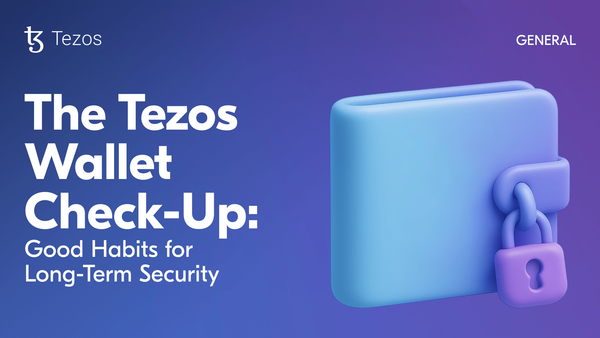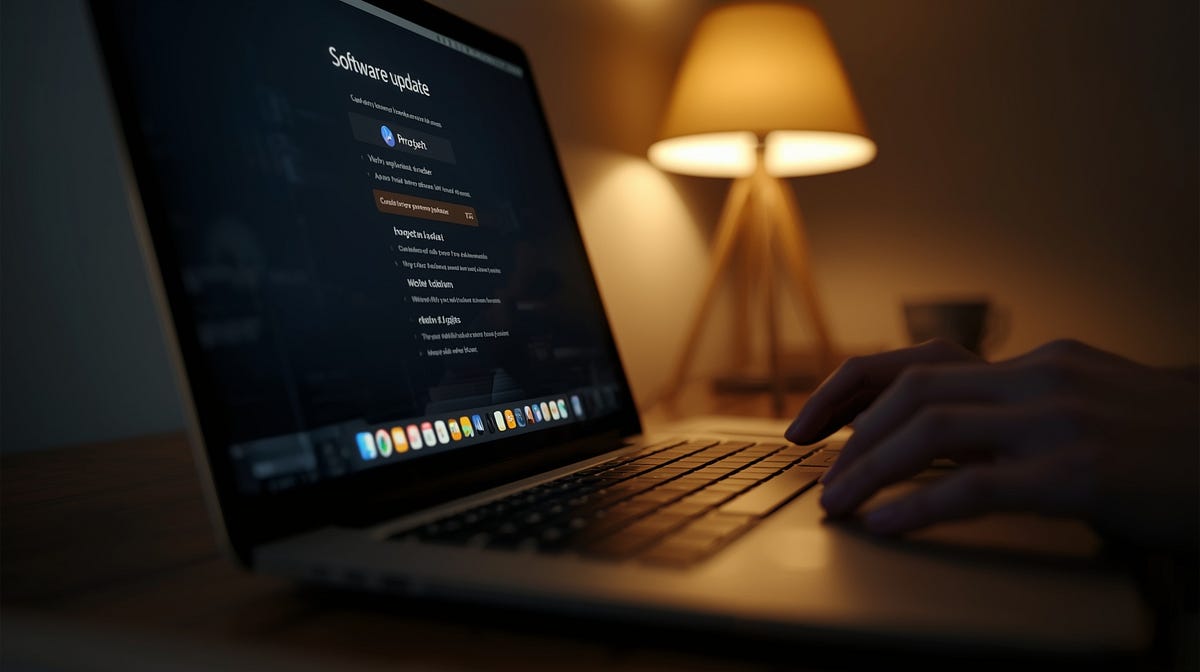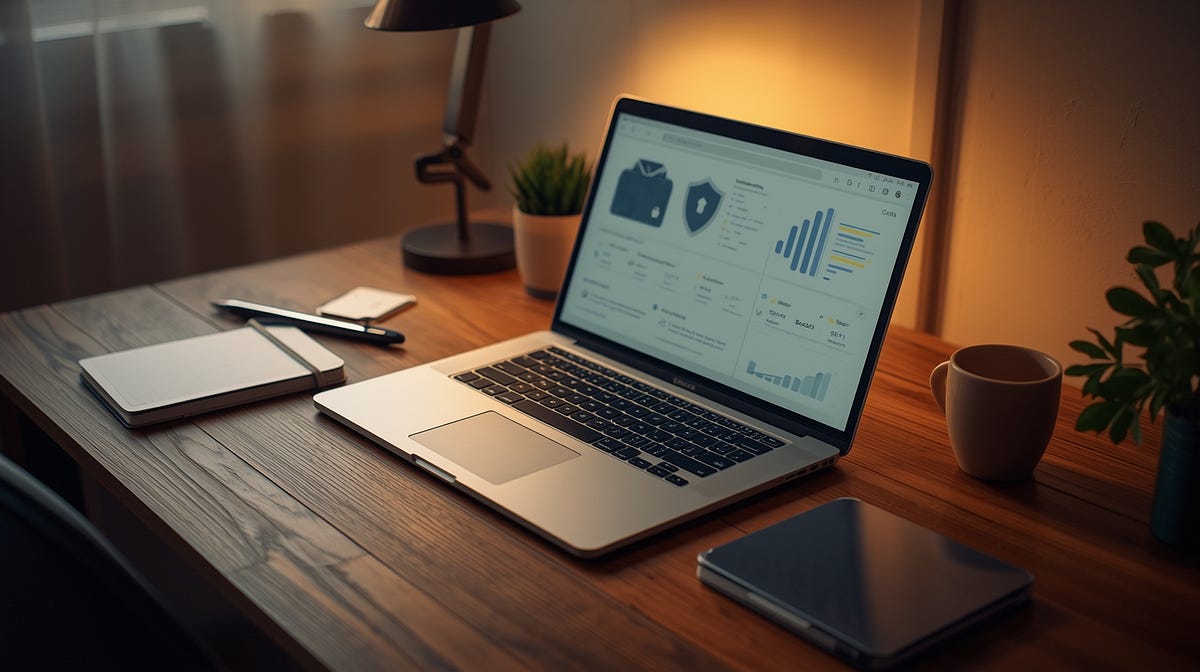The Tezos Wallet Check-Up: Good Habits for Long-Term Security
Simple habits that keep your wallets, seed phrases, and DApp connections safe across Tezos.
1,100 words, 6 minute read

We all remember to clean out our inboxes, update our passwords, or back up our photos every now and then (and if you’re not, you really should!). But when was the last time you gave your wallet a proper check-up?
Most of us use a Tezos wallet like Kukai or Temple, and many also explore Etherlink through EVM wallets such as MetaMask or Rabby. Whatever your setup looks like, good habits make all the difference. Wallet hygiene isn’t about paranoia, it’s about staying one step ahead. And like any good routine, it starts with the basics.
1. Back Up Your Seed Phrase and Verify It Works #
This is rule number one for a reason: if you lose your seed phrase or private key, you lose your funds. There’s no reset button, no recovery form, and no customer support that can bring them back.
The safest way to back it up is still the simplest, write it down on paper, and keep it somewhere offline and safe, preferably in two or three different locations. Avoid storing it on your phone, taking screenshots, or uploading it to the cloud. Those shortcuts are how most “I got hacked” stories begin.
And don’t stop there. Once your backup exists, test it. Try restoring your wallet on another device or wallet just to confirm it works. You’d be surprised how often people discover a missing word or incorrect order only when it’s too late. It’s five minutes of effort for complete peace of mind.

2. Review and Revoke App Permissions #
This is one of the few areas where Tezos and Etherlink handle things differently, and it’s worth understanding how each approach works.
On Etherlink, which follows the EVM model, wallets often use “token approvals.” These allow DApps to spend or move your tokens on your behalf, sometimes without limits. It’s a convenient feature for trading and DeFi, but also one of the most common attack vectors if a DApp you once trusted gets compromised.
The solution is easy: check your approvals regularly. You can use revoke.blockscout.com to review and remove old permissions, or manage them directly inside your EVM wallet. Think of it as changing the locks on your house every so often, you don’t want every old visitor still holding a key.
On Tezos layer 1, things work a bit differently. Transactions always require explicit signatures, so there’s no concept of open-ended spending approvals in the same way. That said, it’s still worth disconnecting from unused DApps through your wallet (Temple, Kukai, Umami, etc.) and keeping an eye on what you’ve interacted with using explorers like tzkt.io. The main risk here isn’t leftover permissions, but malicious front-ends that trick you into signing something unexpected.
3. Audit Your Wallet Setup #
Your wallet is software, and like any software, it needs occasional maintenance. Outdated versions, abandoned extensions, or forgotten browser plugins are weak spots that attackers love to exploit.
Make sure your wallet apps and browser extensions are up to date, and remove anything you no longer use. On mobile, add a passcode or enable Face ID for an extra layer of safety. And if you’re holding significant amounts of tez or tokens, it’s worth upgrading to a hardware wallet such as Ledger to keep your keys offline.
Small updates and occasional cleanups go a long way in closing the quiet gaps that hackers look for.

4. Keep Healthy Daily Habits #
Even with a perfect setup, security often fails in moments of distraction. One careless click or rushed signature can undo months of good hygiene.
Always double-check the URLs you visit before connecting your wallet or signing a transaction. Bookmark official sites for marketplaces and DApps so you never rely on random search results or social media links. Avoid interacting through DMs (direct messages), real projects will never ask you to connect your wallet or “verify your account.”
And above all, avoid transacting when you’re tired or in a hurry. Most wallet drains don’t happen because someone was careless, they happen because someone was impatient. Slow down. Verify. Think twice before you sign.
Beyond links and messages, mindset matters just as much. Rushed decisions, fatigue, and FOMO are exactly the conditions that social-engineering scams rely on. Slow down, read the prompt, and ask yourself what permission you’re granting before you confirm. A few extra seconds of attention is the cheapest insurance you’ll ever buy.
5. Organize Your Wallets by Purpose #
A simple way to improve your wallet hygiene is to use more than one wallet. Having all your funds and activity in a single wallet is like keeping every spare key on the same ring with your main one, if it gets lost, everything’s gone.
Start simple: use a hot wallet for everyday interactions like swapping, minting, or exploring new DApps, and a cold wallet for long-term holdings you don’t plan to touch anytime soon. Cold storage is where hardware wallets make the most sense, keeping your keys completely offline and safe from digital threats.
If you’re comfortable adding a bit more structure, you can go a step further. Many experienced users also keep a warm wallet, a middle ground for short-term holdings that aren’t completely idle but aren’t used in daily activity either.
This separation keeps things clean and contained. Even if one wallet is compromised, the rest stay protected. A simple, practical habit that quietly multiplies your security.

Routine Is Security #
Good wallet hygiene isn’t about memorizing security terms or living in fear of hacks. It’s about routine, small, consistent habits that keep your digital life clean and your tez safe.
Every few months, take a few minutes to go through a quick wallet check-up. It doesn’t take long, but it keeps your setup strong and your assets secure. To make it easier, here’s a simple checklist you can copy, save, and use as your personal reminder.
Wallet Hygiene Checklist
- Back up your seed phrase and verify that recovery works for any wallets you currently have.
- Review and revoke old DApp permissions (on Tezos through your wallet, on Etherlink via revoke.blockscout.com).
- Check and keep wallet software, browser extensions, and mobile apps up to date.
- Check if you use a passcode, PIN, or biometric lock on mobile wallets.
- Move long-term holdings to cold storage if you haven’t already.
- Remind yourself to review all transaction details before signing to ensure they match your intent.
A few minutes of attention every now and then is all it takes to stay safe. Your wallet is your key to the blockchain world, treat it with the same care you’d give to your front door.